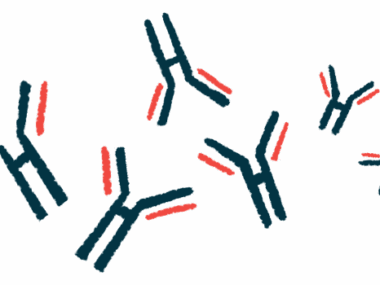Immune Cells in Urine Could Help to Assess AAV Kidney Damage
Measuring T-cells also may predict risk of disease relapse: study
Written by |

Measuring the number of immune T-cells in urine could be used to help identify kidney damage in people with ANCA-associated vasculitis (AAV), a new study suggests.
These urinary T-cells also may aid in predicting treatment responses and the risk of future disease relapse.
“Their promising potential as noninvasive diagnostic and prognostic biomarkers deserves further exploitation,” the researchers wrote, noting that larger studies are needed to confirm these preliminary findings.
The study, “Urinary T Cells Identify Renal ANCA-Associated Vasculitis and Predict Prognosis: a proof of concept study,” was published in Kidney International Reports.
Identifying kidney damage in AAV
AAV is an autoimmune disease characterized by inflammation in the blood vessels, which can cause damage to organs throughout the body but usually affects the kidneys most severely.
The gold standard for assessing AAV-related kidney damage is a biopsy, in which a small piece of kidney tissue is collected and taken to a laboratory for analysis. However, this invasive procedure is not well-suited for continued testing over time — which is key for guiding treatment decisions to ensure the disease is well-controlled while minimizing safety risks.
The kidneys are responsible for filtering the body’s blood, regulating how much salt and water is retained, and shunting waste products to be excreted in the urine. As such, analyzing urine samples can act as a noninvasive way to measure kidney health.
Prior work has suggested that immune cells in urine are dysregulated in other autoimmune diseases that affect the kidneys, like lupus nephritis — a severe manifestation of lupus characterized by kidney inflammation.
But “surprisingly little is known about urinary [immune cell] populations in AAV and whether they reflect disease activity, even though this has been shown in other conditions,” the researchers wrote.
To address this knowledge gap, the team — led by scientists in Germany — conducted a proof-of-concept study to test whether measuring levels of immune T-cells in the urine could be used to identify kidney damage in AAV patients.
T-cells usually are involved in the fight against potential threats and in the suppression of excessive immune and inflammatory responses. However, their abnormal responses also play a role in autoimmune diseases.
The initial analysis included 57 people with AAV and eight healthy individuals, who served as controls. Among patients, 33 had active kidney disease, four had active non-kidney disease, and 20 were in stable remission with previous kidney involvement.
Results showed that T-cell levels were significantly higher among AAV patients with active kidney disease, compared with patients without active kidney disease or healthy controls.
Urinary T-cells may be biomarker in AAV
The frequency of certain T-cell subtypes in the urine samples of patients with active kidney disease was different from those found in the patients’ blood. This suggests that some T-cells are not merely entering the urine due to bleeding somewhere in the urinary tract, but are instead entering the kidney through immune-related mechanisms.
Among patients with biopsy data available, those with inflammation-mediated kidney damage showed significantly higher counts of certain T-cells in urine. Also, the levels of urinary T-cells in patients with active kidney disease correlated significantly with blood levels of an inflammatory marker called C-reactive protein.
“Our findings extend emerging evidence that urinary T cells reflect the [kidney] inflammatory [environment] in various inflammatory kidney diseases,” the researchers wrote.
We see this study as proof of concept that urinary T cells can be used as biomarker in the assessment of AAV disease activity.
Statistical analyses showed that a cutoff value of either 3,149 CD3-positive T-cells or 60 regulatory T-cells (Tregs) per 100 mL of urine allowed the researchers to distinguish between AAV patients with and without active kidney disease with the highest accuracy.
These findings were then validated in an additional group of 30 AAV patients: 19 with active kidney disease, three with active non-kidney disease, and eight in disease remission.
In the initial group of patients, the CD3-positive T-cell cutoff value accurately identified 90% of those with the active kidney disease and 92% of those without. In the validation group of patients, this cutoff value allowed the accurate identification of 82% of those with active kidney disease and 89% of those without.
This level of accuracy was comparable to that of traditional biomarkers for kidney damage, like dipstick tests for blood in urine. It was higher, however, than that of urinary biomarkers for active kidney AAV such as sCD163 or MCP-1.
The scientists then assessed whether urinary T-cell counts could be used to predict treatment responses, using available follow-up data from 30 of the patients with active kidney disease.
These results showed that patients with higher levels of certain T-cell subsets — specifically Tregs and T-helper 17 (Th17) cells — were significantly more likely to have an early response to treatment.
Among the 28 patients in remission who had available follow-up data, three experienced a kidney flare, or a sudden worsening of kidney disease, within six months after urine analysis. The researchers noted that all three of these patients had very high urinary levels of Th17 cells and a “complete absence” of Tregs.
This further supports the known “anti-inflammatory role of Treg cells and damage promoting effects of TH17 cells,” in AAV patients with active kidney disease, the team wrote.
“We found that Treg and TH17 cells even hold prognostic value in predicting clinical outcome of patients with active disease and potentially even [kidney] relapse in patients in remission up to 6 months prior to relapse,” the researchers wrote.
“We see this study as proof of concept that urinary T cells can be used as biomarker in the assessment of AAV disease activity,” the team wrote, adding that further studies are needed to validate the results and determine whether and how they can best be applied in a clinical setting.







